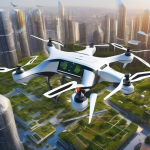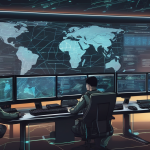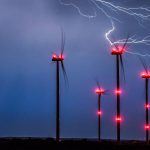The Role of AI in Understanding Rare Natural Events
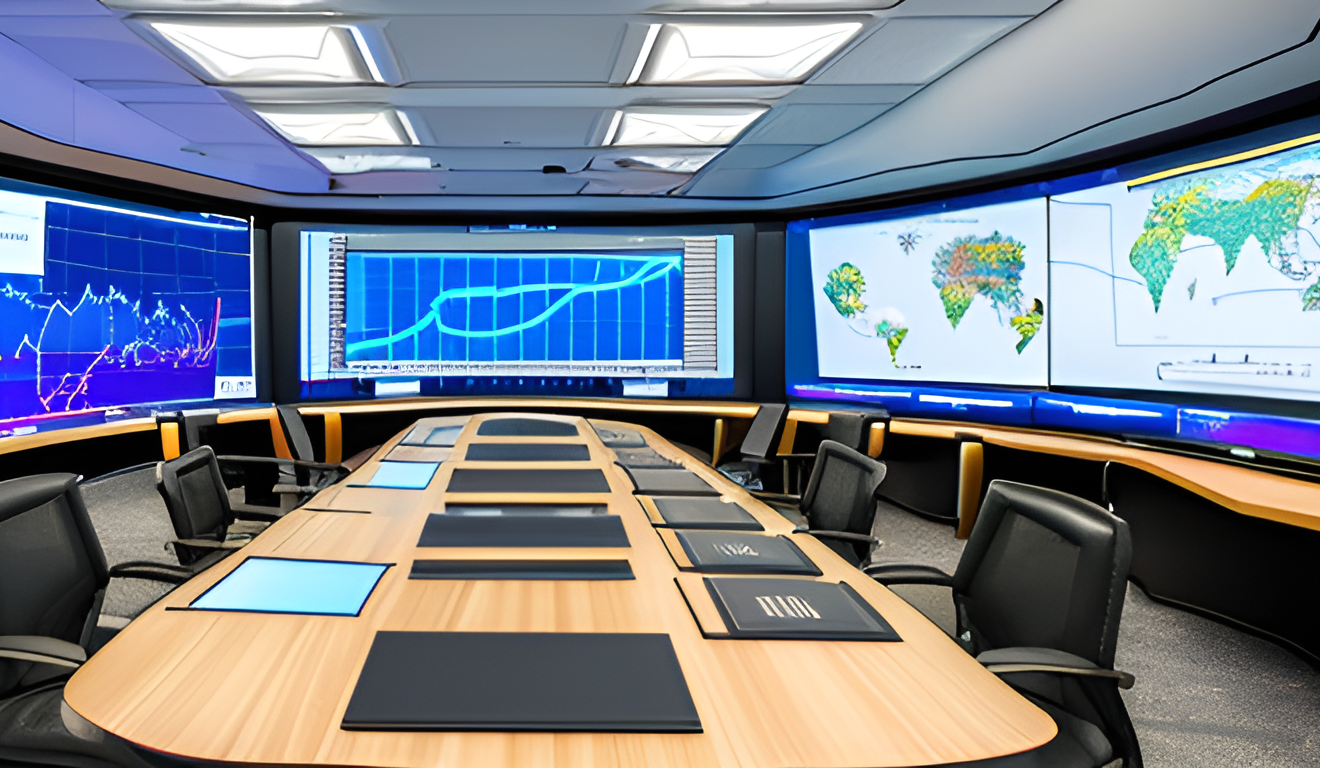
In recent years, the integration of artificial intelligence (AI) into environmental science has sparked a revolution in how we comprehend and respond to rare natural events. Imagine being able to predict an earthquake or a volcanic eruption with greater accuracy than ever before. This is not just a dream; it’s becoming a reality thanks to the powerful capabilities of AI. By leveraging vast amounts of data and sophisticated algorithms, AI is transforming our understanding of these unpredictable phenomena.
One of the most exciting aspects of AI’s role in this field is its ability to analyze complex datasets. Traditional methods often struggle with the sheer volume and variety of data available. However, AI excels in data processing, allowing researchers to sift through satellite images, sensor data, and even crowd-sourced reports to identify patterns that might indicate an impending natural disaster. This capability not only enhances our predictive abilities but also enables more effective response strategies.
The potential of AI extends beyond mere prediction. It also plays a crucial role in disaster management. For example, AI can assist in developing early warning systems that alert communities of imminent threats, thereby saving lives and minimizing damage. Furthermore, by optimizing resource allocation during emergencies, AI ensures that help reaches those who need it most, when they need it.
As we delve deeper into the role of AI in understanding rare natural events, it’s essential to recognize the challenges that accompany this technological advancement. Issues such as data privacy and the need for interdisciplinary collaboration can hinder progress. Nevertheless, the collaborative efforts between scientists and technologists are paving the way for innovative solutions that blend scientific rigor with technological prowess.
In conclusion, AI is not just a tool; it is a game-changer in the realm of environmental science. With ongoing advancements in technology, the future promises even greater enhancements in our understanding and management of rare natural events. As we harness the power of AI, we move closer to a world where we can better predict, prepare for, and respond to the unpredictable forces of nature.
Introduction to AI in Environmental Science
Artificial intelligence is revolutionizing the field of environmental science in ways that were once thought to be the stuff of science fiction. Imagine having a powerful ally that can analyze vast amounts of data in seconds, providing insights that help us understand complex natural phenomena. This is exactly what AI brings to the table, enabling researchers to delve deeper into the mysteries of rare natural events like earthquakes, floods, and volcanic eruptions.
By leveraging advanced algorithms and machine learning techniques, AI transforms how we collect and interpret data. It allows scientists to sift through mountains of information—from historical weather patterns to real-time seismic data—making connections that would be impossible for the human brain alone. For instance, consider the potential of AI to analyze satellite imagery. This technology can detect subtle changes in landscapes that might indicate an impending disaster, providing critical early warnings.
Moreover, the integration of AI into environmental science is not just about crunching numbers; it’s about enhancing our predictive capabilities. With the ability to identify patterns and trends from diverse data sources, AI helps in forecasting rare events with greater accuracy. This means that communities can be better prepared when nature decides to unleash its fury.
However, the journey of AI in environmental science is just beginning. As we explore its vast potential, we also face challenges, including the need for high-quality data and interdisciplinary collaboration. The fusion of technology and environmental science is a thrilling frontier, one that holds the promise of not only understanding but also protecting our planet. In the next sections, we will delve deeper into the specific data collection techniques and machine learning algorithms that are driving this transformation.
Data Collection Techniques
Artificial intelligence’s effectiveness in understanding rare natural events hinges on sophisticated . These techniques are not just about gathering information; they are about harnessing a variety of sources to create a comprehensive picture of environmental phenomena. Imagine trying to solve a complex puzzle without all the pieces—this is where advanced data collection comes into play.
One of the most powerful tools in this arsenal is satellite imagery. Satellites orbiting the Earth capture high-resolution images, providing real-time data on weather patterns, land use changes, and even the movements of tectonic plates. This information is invaluable for predicting events like earthquakes and floods. But satellites are just the tip of the iceberg.
Next, we have sensor networks. These networks consist of a multitude of sensors strategically placed in various locations. They continuously monitor environmental conditions such as temperature, humidity, and seismic activity. For instance, a network of seismic sensors can detect the slightest tremors, allowing scientists to analyze patterns that might indicate an impending earthquake. The data from these sensors can be aggregated and analyzed using AI algorithms to identify trends that would be impossible to discern manually.
Additionally, the rise of crowd-sourced information has transformed data collection. With smartphones in nearly every pocket, individuals can report real-time observations of natural events, such as flooding or landslides. This grassroots data collection complements traditional methods, providing a more holistic view of the situation on the ground. By integrating these diverse data sources, AI can create predictive models that significantly enhance our understanding of rare natural events.
In summary, the combination of satellite imagery, sensor networks, and crowd-sourced information forms a robust framework for data collection in environmental science. These techniques not only improve our predictive capabilities but also empower communities to respond more effectively to natural disasters.
Machine Learning Algorithms
Machine learning algorithms are the backbone of modern data analysis, especially when it comes to understanding rare natural events. These algorithms are designed to sift through vast amounts of data, identifying patterns that the human eye might miss. Imagine trying to find a needle in a haystack; machine learning does just that but at lightning speed and with incredible accuracy. By leveraging these algorithms, researchers can unlock insights that were previously hidden, enhancing our predictive capabilities for events like earthquakes and floods.
One of the most exciting aspects of machine learning is its ability to learn from new data continuously. This means that as more data becomes available—whether through satellite imagery, sensor networks, or crowd-sourced information—the algorithms can refine their predictions. For instance, when analyzing seismic data, machine learning can help identify subtle shifts in tectonic plates that might indicate an impending earthquake. This proactive approach can be a game-changer in disaster preparedness.
Furthermore, machine learning algorithms can be categorized into several types, each serving a unique purpose in analyzing environmental data:
- Supervised Learning: This type involves training the algorithm on a labeled dataset, allowing it to make predictions based on input data.
- Unsupervised Learning: Here, the algorithm identifies patterns without predefined labels, making it useful for discovering hidden correlations in data.
- Reinforcement Learning: This approach uses trial and error to optimize decision-making processes, which is particularly useful in dynamic environments.
As we delve deeper into the realm of machine learning, it’s essential to recognize its limitations as well. While these algorithms can significantly enhance our understanding of rare natural events, they are not foolproof. Data quality, algorithm bias, and the complexity of natural phenomena can all impact the effectiveness of machine learning models. Therefore, ongoing research and collaboration between data scientists and environmental experts are crucial to ensure that these tools are used effectively.
In conclusion, machine learning algorithms are transforming how we predict and respond to rare natural events. By harnessing the power of these technologies, we can improve our disaster management strategies and ultimately protect our communities and ecosystems from the unpredictable forces of nature.
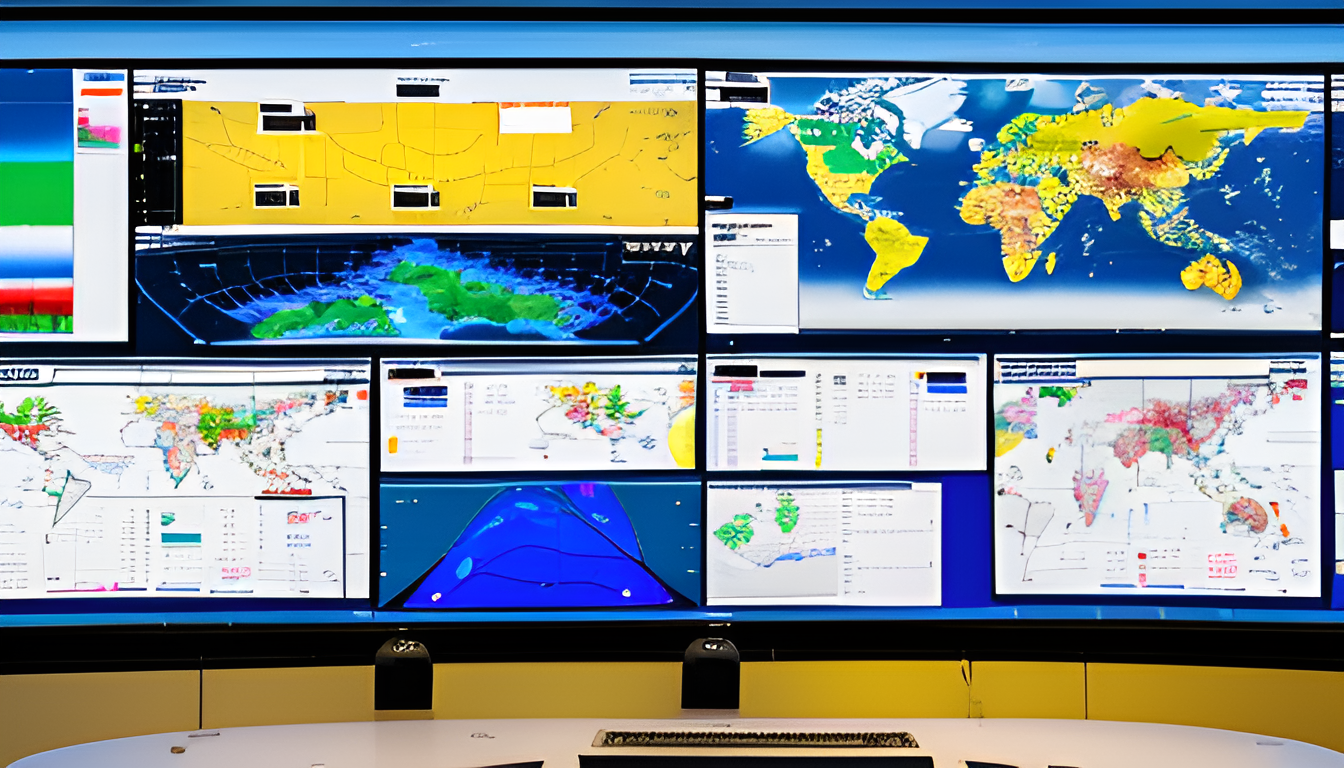
Case Studies of AI Applications
Artificial intelligence has made remarkable strides in understanding rare natural events, and several case studies illustrate its transformative impact. For instance, in 2020, researchers utilized AI algorithms to analyze seismic data from California’s San Andreas Fault. By employing machine learning techniques, they were able to identify patterns that preceded minor earthquakes, providing invaluable insights into potential larger seismic activities. This predictive capability could revolutionize how communities prepare for and respond to earthquakes, potentially saving lives and minimizing damage.
Another compelling case study comes from the realm of flood prediction. In Bangladesh, a team of scientists collaborated with local authorities to implement an AI-driven flood forecasting system. By integrating satellite imagery, weather data, and historical flood patterns, the system generated real-time alerts that allowed communities to evacuate in advance of impending floods. The results were astonishing; the AI system increased the accuracy of flood predictions by over 30%, significantly enhancing community preparedness.
Additionally, AI has been applied in monitoring volcanic activity. The 2018 eruption of Kilauea in Hawaii showcased the effectiveness of AI in analyzing gas emissions and thermal imagery. Researchers developed an AI model that processed vast amounts of data from sensors and drones, enabling them to predict eruptions with greater accuracy. This proactive approach not only improved safety measures but also provided crucial information for evacuations and resource allocation.
These case studies highlight the diverse applications of AI in understanding rare natural events. The integration of technology and environmental science not only enhances predictive capabilities but also fosters a culture of informed decision-making. As we move forward, the continued collaboration between scientists and technologists will likely lead to even more innovative solutions for disaster management.
Challenges in Implementation
Implementing AI in the realm of understanding rare natural events is not without its hurdles. First and foremost, data privacy concerns loom large. As AI systems require vast amounts of data to function effectively, the collection and use of sensitive information can lead to significant ethical dilemmas. For instance, how do we ensure that personal data collected during a disaster response is handled responsibly? This question highlights the need for robust policies that protect individual privacy while still allowing for data-driven insights.
Another challenge is the necessity for interdisciplinary collaboration. The integration of AI into environmental science is not a one-man show; it requires the cooperation of various fields, including computer science, meteorology, and ecology. This collaboration can often be hindered by differing terminologies, methodologies, and even goals. For example, a computer scientist might prioritize algorithm efficiency, while an environmental scientist may focus on ecological accuracy. Bridging this gap is crucial for the successful implementation of AI technologies.
Moreover, the complexity of integrating AI systems into existing frameworks presents a significant obstacle. Many organizations rely on traditional methods for data collection and analysis. Transitioning to AI-driven approaches can be daunting, requiring not only new technologies but also extensive training for personnel. This shift can be met with resistance, as staff may feel overwhelmed by the learning curve associated with new tools. To ease this transition, organizations must invest in comprehensive training programs that empower employees to embrace AI rather than fear it.
In summary, while AI holds immense potential for understanding rare natural events, its implementation is fraught with challenges. Addressing data privacy, fostering interdisciplinary collaboration, and simplifying integration processes are essential steps in harnessing the full power of AI. By tackling these issues head-on, we can pave the way for a future where technology and environmental science work hand in hand.
Impact on Disaster Management
Artificial Intelligence (AI) is not just a buzzword; it’s a game changer in the realm of disaster management. Imagine having the ability to predict a natural disaster before it strikes—this is exactly what AI brings to the table. By analyzing vast amounts of data from various sources, AI can identify patterns and trends that humans might overlook. This capability enables early warning systems that can alert communities about impending threats, potentially saving countless lives.
For instance, AI-driven algorithms can process satellite imagery and real-time data from sensor networks to forecast weather anomalies or seismic activities. These predictions allow authorities to mobilize resources efficiently, ensuring that help reaches those in need without delay. In fact, AI can optimize resource allocation by determining which areas require immediate attention based on data analysis.
Moreover, AI enhances real-time decision-making during disasters. When a crisis occurs, every second counts. AI systems can analyze incoming data and provide actionable insights to emergency responders. This not only streamlines the response process but also helps in minimizing the chaos that often accompanies natural disasters. For example, during a flood, AI can predict the most affected areas and suggest evacuation routes, making it easier for first responders to act swiftly.
However, the integration of AI into disaster management is not without its challenges. Issues such as data privacy and the need for robust infrastructure can hinder its implementation. Yet, the potential benefits far outweigh these concerns. As we continue to refine these technologies, the impact of AI on disaster management will only grow stronger, paving the way for a more resilient society.
In conclusion, the role of AI in disaster management is pivotal. By improving early warning systems, optimizing resource allocation, and enhancing real-time decision-making, AI is revolutionizing how we prepare for and respond to rare natural events. The future looks bright as we harness this technology to protect communities and ecosystems alike.
Future Trends in AI and Natural Events
As we look ahead, the intersection of artificial intelligence and the study of rare natural events is set to evolve dramatically. With advancements in technology, we can expect AI to play an even more significant role in enhancing our understanding and management of these unpredictable phenomena. Imagine a world where predictive models are not just educated guesses but highly accurate forecasts that save lives and protect ecosystems.
One of the most exciting trends is the integration of deep learning and neural networks into environmental monitoring systems. These technologies can analyze vast amounts of data from multiple sources, such as satellite imagery, weather patterns, and geological surveys, to detect subtle changes that might indicate an impending natural event. For instance, deep learning algorithms can identify early signs of volcanic activity by recognizing patterns in ground deformation and gas emissions that human analysts might overlook.
Moreover, the future will likely see a rise in collaborative platforms where scientists, technologists, and even the general public can contribute data and insights. This collaborative approach not only enriches the data pool but also fosters community engagement. Imagine using your smartphone to report unusual weather patterns or geological shifts, contributing to a real-time database that AI can analyze for predictive insights.
However, with these advancements come challenges. The complexity of AI systems necessitates a focus on interdisciplinary collaboration. Experts from various fields must work together to ensure that AI tools are not only scientifically sound but also ethically developed and implemented. This collaboration is crucial for building trust in AI systems, especially when they are used to make critical decisions in disaster management.
In summary, the future of AI in understanding rare natural events is bright, filled with possibilities that can enhance our preparedness and response strategies. As we harness the power of AI, we pave the way for a more resilient society that can better withstand the unpredictable forces of nature.
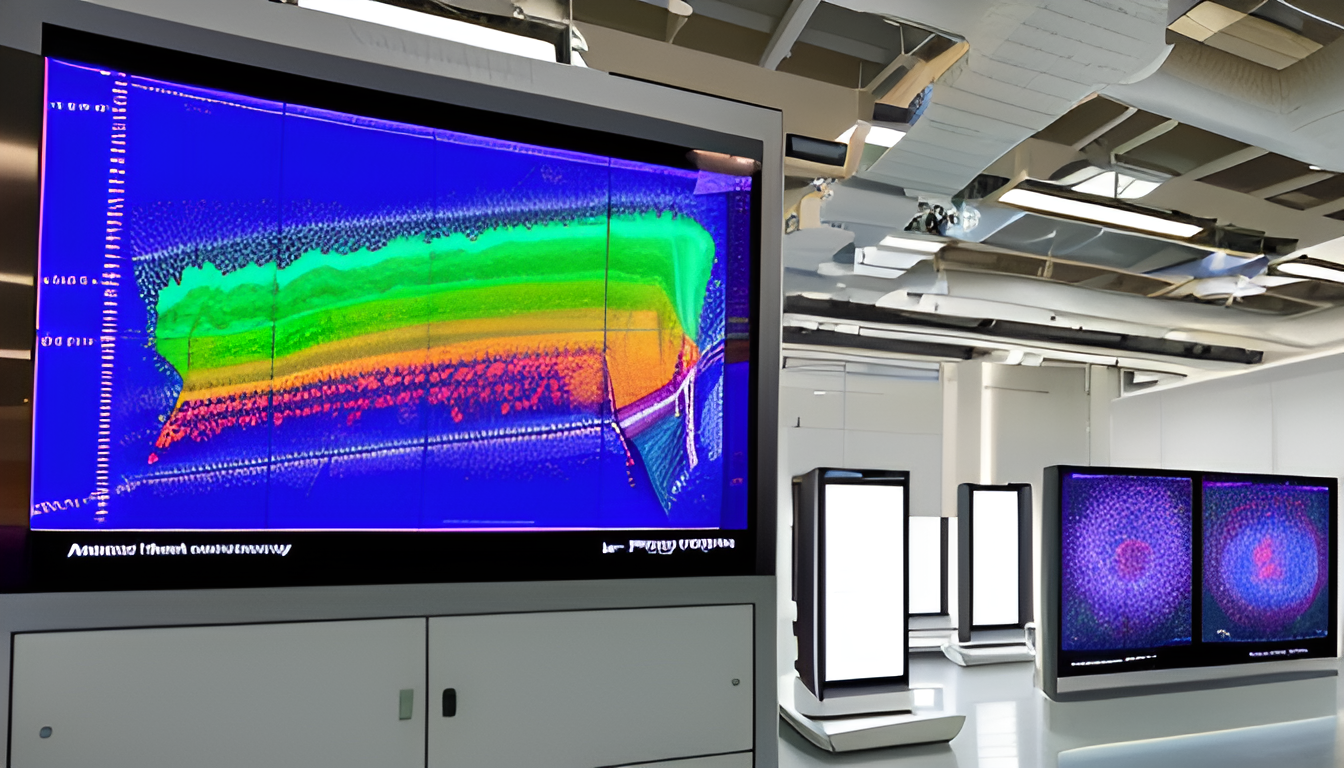
Ethical Considerations
As we dive deeper into the integration of artificial intelligence in understanding rare natural events, it’s crucial to address the that accompany this technological advancement. With great power comes great responsibility, and AI is no exception. The use of AI in environmental science raises several questions about data privacy, decision-making processes, and the broader implications of relying on technology to interpret natural phenomena.
One of the primary concerns is how data is collected and utilized. AI systems often rely on vast amounts of data, which can include sensitive information. Researchers must ensure that data collection methods respect privacy and comply with regulations. Moreover, the transparency in how data is used is essential to maintain public trust. For instance, when AI predicts a potential natural disaster, how can we be sure that the data driving those predictions is ethically sourced?
Additionally, there are ethical dilemmas surrounding decision-making processes. AI algorithms can sometimes make decisions that affect communities without human intervention. This raises the question: who is accountable when an AI system makes a mistake? It’s vital to establish clear guidelines on how AI should be used in critical situations, ensuring that human oversight is always part of the equation.
Furthermore, the reliance on AI can lead to a devaluation of human expertise. While AI can process data and identify patterns at lightning speed, it cannot replace the nuanced understanding that human scientists bring to the table. Therefore, collaboration between AI technologists and environmental scientists is essential to ensure that the technology complements rather than replaces human insight.
In summary, as we embrace the potential of AI in understanding rare natural events, we must also tread carefully. Addressing these ethical considerations will not only safeguard individuals and communities but also enhance the credibility and effectiveness of AI in environmental science. By fostering a culture of responsibility and transparency, we can harness AI’s capabilities while ensuring that ethical standards are upheld.
Collaboration Between Scientists and Technologists
In today’s rapidly evolving world, the is more crucial than ever, especially in the realm of understanding rare natural events. Imagine a scenario where the brilliance of scientific inquiry meets the innovative prowess of technology. This partnership not only enhances our understanding of complex phenomena but also equips us with the tools necessary for effective disaster management.
Scientists bring their expertise in data analysis, environmental patterns, and ecological systems, while technologists contribute their skills in software development, machine learning, and data visualization. Together, they can tackle the challenges posed by rare natural events more efficiently. For instance, scientists can identify critical data points, while technologists can develop algorithms to process this information swiftly.
One of the key areas where this collaboration shines is in the development of predictive models. By leveraging advanced technologies like artificial intelligence and big data analytics, teams can create more accurate forecasts that help communities prepare for potential disasters. This process often involves:
- Sharing data across platforms
- Integrating diverse datasets from various sources
- Testing hypotheses with real-time simulations
Moreover, interdisciplinary collaboration fosters innovation. When scientists and technologists work together, they can brainstorm new ideas and approaches that might not emerge in isolated environments. This synergy can lead to groundbreaking solutions that not only predict rare events but also mitigate their impacts. For example, the use of drones for real-time data collection during a natural disaster showcases how technology can enhance scientific research.
In conclusion, the partnership between scientists and technologists is vital for advancing our understanding of rare natural events. By combining their strengths, they can develop innovative strategies that not only improve our predictive capabilities but also enhance community resilience in the face of environmental challenges.
Conclusion: The Future of AI in Environmental Understanding
As we stand on the brink of a new era in environmental science, the role of artificial intelligence in understanding rare natural events is becoming increasingly vital. The integration of AI technologies not only enhances our predictive capabilities but also revolutionizes how we respond to these unpredictable phenomena. Imagine a world where we can foresee an earthquake’s tremors or predict a flood’s path with remarkable accuracy—this is not just a dream, but a tangible reality that AI is helping to create.
Looking ahead, the future of AI in environmental understanding is filled with promise. With the advent of deep learning and neural networks, we can expect even more sophisticated models that will refine our ability to monitor and manage natural events. These technologies will allow us to:
- Enhance early warning systems to provide timely alerts to communities at risk.
- Improve resource allocation during disasters, ensuring that help reaches those in need swiftly.
- Facilitate real-time decision-making that can save lives and mitigate damage.
However, we must also remain vigilant about the ethical implications of using AI in this field. Questions surrounding data privacy, algorithmic bias, and the reliance on technology for critical decision-making must be addressed. Collaboration between scientists and technologists will be essential in navigating these challenges, ensuring that our solutions are both effective and responsible.
In summary, the journey of AI in understanding rare natural events is just beginning. With continued innovation and a commitment to ethical practices, we can harness the full potential of AI to create a more resilient society capable of facing the challenges posed by our ever-changing environment.
Frequently Asked Questions
- How does AI enhance our understanding of rare natural events?
AI enhances our understanding by analyzing vast amounts of data from various sources, such as satellite imagery and sensor networks. This allows researchers to identify patterns and make more accurate predictions about events like earthquakes and floods.
- What role do machine learning algorithms play?
Machine learning algorithms are crucial for dissecting complex datasets. They help in recognizing trends and anomalies, which can lead to better forecasting and preparedness for rare natural events.
- What are some challenges in implementing AI in this field?
Some challenges include data privacy concerns, the need for collaboration across disciplines, and the difficulty of integrating AI into existing disaster management frameworks.
- How does AI impact disaster management?
AI significantly improves disaster management by providing early warning systems, optimizing resource allocation, and facilitating real-time decision-making, which helps mitigate the effects of natural disasters on communities.
- What future trends can we expect in AI and natural events?
Future trends include advancements in deep learning and neural networks, which are expected to enhance predictive models, leading to more effective monitoring and management strategies for rare natural events.
- Are there ethical considerations with AI in environmental science?
Yes, ethical considerations include how data is used, the transparency of decision-making processes, and the implications of relying on technology for understanding and responding to natural events.
- Why is collaboration between scientists and technologists important?
Collaboration is essential to maximize the potential of AI in understanding rare natural events. It fosters innovation and ensures that solutions are based on solid scientific research and practical applications.



